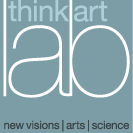Interactional operators in diamond semiotics
From polylogical transjunctions to polysemiotic interactions and reflections
Abstract
Comparing polycontextural logics and semiotics, the idea of interactionality is introduced as a further step of interaction in embedded semiotics. To achieve interactionality/reflectionality for semiotics some new concepts had been introduced.
For polylogical systems, transjunctional operators are defining interactions between logics. After a sketch of polysemiotics, poly-semiotic formulations of interaction and reflection operators are introduced.
1. Semiotics and polylogics
"Such an interpretation does not exist yet. However, if we look at Peirce´s ideas on semiosis as
(E. von Goldammer)
http://www.vordenker.de/ggphilosophy/la_poly.htm



2. Dissemination of semiotics

3. Interactivity in poly-semiotics
5. Interactions in diamonds
Transjunctions, as important operators of interaction, are well known in polycontextural logics. Semiotics offers a different approach to cognitive/volitive modeling. In this paper, some steps to sketch an interactional approach in semiotics along the experiences, models and formalizations of polycontextural logic, is undertaken.
FULL TEXT
http://www.thinkartlab.com/pkl/lola/Transjunctional Semiotics/Transjunctional Semiotics.pdf
http://www.thinkartlab.com/pkl/lola/Transjunctional Semiotics/Transjunctional Semiotics.html
Best with Publicon:
http://www.thinkartlab.com/pkl/lola/Transjunctional Semiotics/Transjunctional Semiotics.nb
Abstract
Comparing polycontextural logics and semiotics, the idea of interactionality is introduced as a further step of interaction in embedded semiotics. To achieve interactionality/reflectionality for semiotics some new concepts had been introduced.
For polylogical systems, transjunctional operators are defining interactions between logics. After a sketch of polysemiotics, poly-semiotic formulations of interaction and reflection operators are introduced.
1. Semiotics and polylogics
"Such an interpretation does not exist yet. However, if we look at Peirce´s ideas on semiosis as
"an action, or influence, which is, or involves, a co-operation of three subjects, such as a sign, its object, and its interpretant, this tri-relative influence not being in any way resolvable into actions between pairs",then we could conclude that Peirce would have used Günther´s ideas of polycontexturality if they would have been known to him in his time.”
(E. von Goldammer)
http://www.vordenker.de/ggphilosophy/la_poly.htm



2. Dissemination of semiotics

3. Interactivity in poly-semiotics
"Transjunctional operations become unavoidable as soon as a system shifts from first-order to second-order observations or, in Günther's terminology, to polycontextural observations.4. Logification of semiotics
This comes very close to Derrida's attempt to transcend the limitations of a metaphysical frame which allows for only two states: being and non-being.
It comes close to a rejection of logocentrism.
But it does not imply a rejection of logics or of formalisms.
Günther is not satisfied with the fuzziness of verbal acoustics and paradoxical formulations and tries, whether successful or not, to find logical structures of higher complexity, capable of fixing new levels for the integration of ontology (for more than one subject) and logics (with more than two values)."
(Luhmann, Deconstruction as Second-Order Observing, 1993)
5. Interactions in diamonds
Transjunctions, as important operators of interaction, are well known in polycontextural logics. Semiotics offers a different approach to cognitive/volitive modeling. In this paper, some steps to sketch an interactional approach in semiotics along the experiences, models and formalizations of polycontextural logic, is undertaken.
FULL TEXT
http://www.thinkartlab.com/pkl/lola/Transjunctional Semiotics/Transjunctional Semiotics.pdf
http://www.thinkartlab.com/pkl/lola/Transjunctional Semiotics/Transjunctional Semiotics.html
Best with Publicon:
http://www.thinkartlab.com/pkl/lola/Transjunctional Semiotics/Transjunctional Semiotics.nb


0 Comments:
Post a Comment
Subscribe to Post Comments [Atom]
<< Home